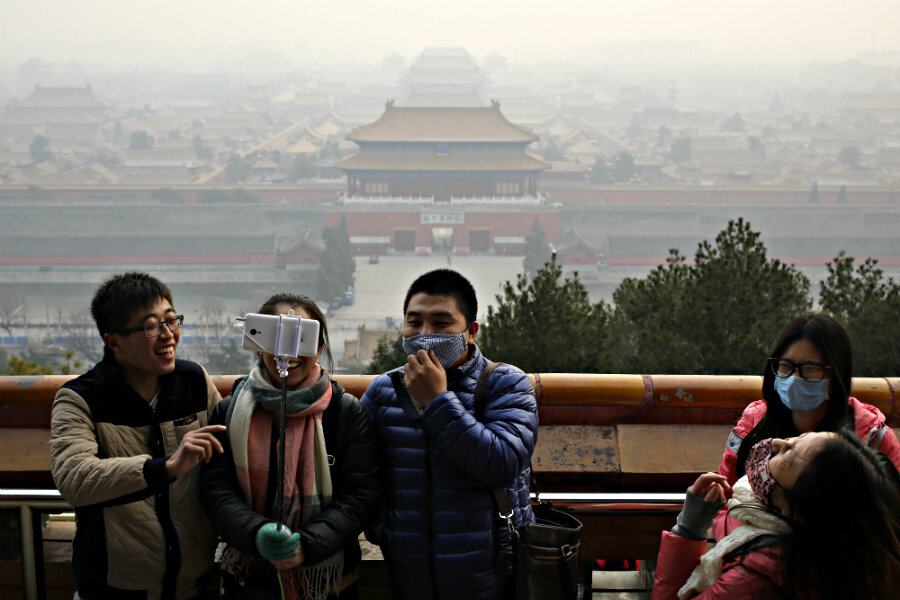Beijing issues first-ever smog red alert. Progress?
Loading...
For the first time ever on Monday, Beijing issued its gravest air-quality warning – red alert – for thick smog that is choking the city and will likely persist for several more days.
Schools were urged to close and restrictions have been placed on factories and traffic, keeping half the city’s vehicles turned off.
The red alert is the highest level of a four-tier warning system adopted two years ago, and indicates that more than three consecutive days of intense smog is forecasted to plague the city of 22.5 million people.
@BeijingAir, a Twitter account operated by the United States Embassy in Beijing, has rated the local air quality as “very unhealthy” for the past 24 hours.
Readings of PM2.5, the fine particle matter thought to affect health, inched toward 300 micrograms per cubic meter Monday and is expected to continue rising until a cold front comes Thursday. According to the World Health Organization, the safe level for particle matter is 25 µg/m3 .
Cars are limited to driving every other day, depending on the evenness or oddness of the last number on their license plate. Extra subway trains and buses will be available to meet the increased demand for public transportation.
While this latest alert shows pollution in China’s capital is reaching crisis levels, it also suggests Beijing is being more transparent about the city’s air quality. Chinese officials have been notoriously coy when it comes to addressing the public health crisis.
In February, The New Yorker’s Christopher Beam reported on China’s recent drastic shift in tone:
The conversation about pollution in China has shifted dramatically in recent years. In 2011, state media still blamed “fog” for poor visibility in the capital, and government meteorologists denied that smog was caused by emissions. But denial has become less tenable by the day: air-quality data is now widely available, including a running update from the roof of the U.S. Embassy; “airpocalypse” conditions have become a regular, sometimes crippling feature of Chinese cities; and pollution is driving away tourists. Now officials are keen to stress the importance of environmental protection. Last March, Premier Li Keqiang promised to “declare war” on pollution and fight it with an “iron fist.”
The culprit for most of the pollution is coal-fired power plants, vehicle emissions, and factory and construction work. China is addressing the problem by drafting plans to upgrade coal power plants during the next five years, and emissions are expected to peak by 2030 before they start declining. While China has honed its emissions standards and major investments have been made in renewables, the most populated country in the world still relies on coal for more than 60 percent of its energy needs.
As The Christian Science Monitor has reported, there are some signs of progress. For the first time in more than a decade, China’s carbon dioxide emissions dipped by two percent in 2014. Moreover, a study from the London School of Economics in June found that China is expected to see total emissions start falling by 2025, five years ahead of schedule.
Chinese leader Xi Jinping has said he starts his day by checking Beijing’s air quality, hoping that eventually “every day we will see a blue sky, green mountains and clear rivers.”
Residents were given a brief taste of that vision in August when severe restrictions were placed on traffic and factory production to ensure good conditions for a parade to celebrate 70th anniversary of Japan’s WWII defeat. Picture-perfect blue skies graced the city, providing a few days of environmental bliss before conditions returned to the status-quo.
This report contains material from The Associated Press.





